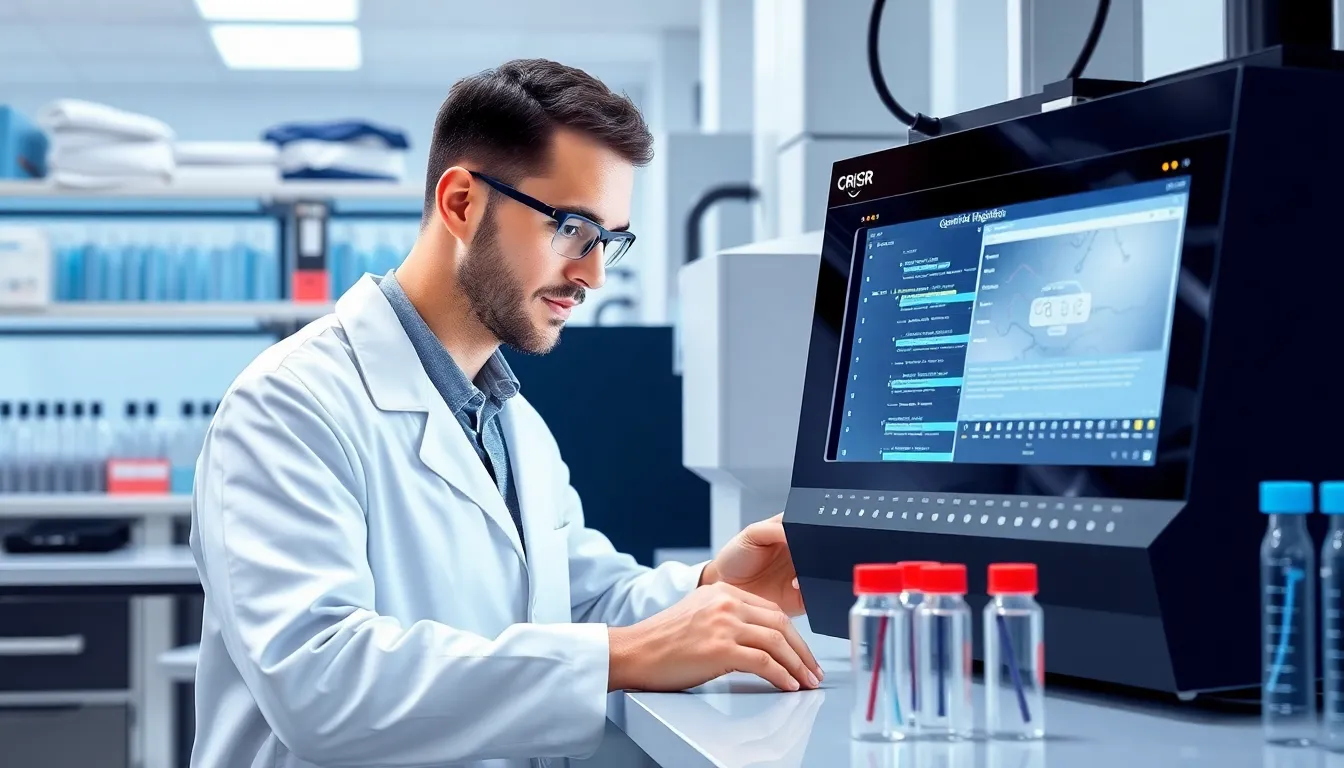In the ever-evolving world of life sciences, technology is the superhero we never knew we needed. Picture this: labs buzzing with cutting-edge gadgets, researchers wielding data like a magician with a wand, and breakthroughs happening faster than you can say “genome sequencing.” As innovation races ahead, it’s crucial to stay in the loop about the trends shaping the future of health and medicine.
Table of Contents
ToggleOverview of Technology Trends in Life Sciences
Artificial intelligence (AI) continues to reshape the landscape of life sciences by optimizing processes. Organizations adopt AI technologies for tasks like data analysis and drug discovery, significantly reducing time and costs. Machine learning algorithms improve predictive accuracy, enabling researchers to identify potential health risks more effectively.
Data analytics has gained traction, empowering researchers to extract insights from large data sets. By leveraging real-time analytics, companies can make informed decisions rapidly. Improved data management systems enhance collaboration across different research teams.
Genomics technology plays a crucial role in personalized medicine. Innovations such as CRISPR gene editing allow for precise alterations, which may lead to breakthroughs in treating genetic disorders. Scientists now tailor treatments based on an individual’s genetic makeup, enhancing therapeutic outcomes.
Wearable technologies and remote monitoring devices are transforming patient care. These tools provide continuous health data, allowing healthcare professionals to monitor patients in real-time. Enhanced connectivity through mobile applications ensures timely interventions, improving overall patient outcomes.
Blockchain technology is also emerging within life sciences, particularly in clinical trials. By increasing transparency, blockchain helps ensure data integrity and compliance with regulations. It facilitates secure data sharing among stakeholders, fostering trust and collaboration.
Virtual reality (VR) and augmented reality (AR) offer immersive experiences for training and education. Healthcare professionals utilize VR simulations for surgical training, which enhance skill development without real-world consequences. AR applications provide on-the-job assistance, improving efficiency during medical procedures.
Technological advances in life sciences create opportunities to enhance research and patient care. By understanding these trends, stakeholders can stay ahead in a rapidly evolving field.
Advances in Genomics and Personalized Medicine

Technology advancements in genomics and personalized medicine drive significant changes in healthcare. The emergence of precise techniques allows for tailored treatment plans based on individual genetic profiles.
CRISPR and Gene Editing Technologies
CRISPR technology revolutionizes gene editing by offering unparalleled accuracy and efficiency. Researchers leverage CRISPR to target specific genes and modify them with precision, addressing genetic disorders. Increased accessibility to CRISPR tools empowers researchers to explore innovative therapies and potential cures for various diseases. For example, patients with sickle cell disease show promising results from experimental CRISPR treatments, highlighting effectiveness in correcting genetic mutations. Ethical considerations remain crucial, shaping the responsible application of these powerful technologies.
Next-Generation Sequencing
Next-Generation Sequencing (NGS) transforms genomics by enabling rapid and cost-effective DNA sequencing. NGS technology permits whole-genome analysis, providing insights into genetic variation crucial for developing personalized therapies. Significant improvements in throughput and accuracy allow researchers to sequence entire genomes in days rather than months. As a result, physicians can better understand patient-specific conditions and tailor treatments accordingly. The integration of NGS in clinical settings facilitates the early detection of diseases, enhancing prevention and management strategies.
Digital Health and Telemedicine Innovations
Digital health and telemedicine are reshaping patient care and health management. Innovative technologies enhance efficiency and accessibility in the life sciences sector.
Wearable Health Technologies
Wearable health technologies play a key role in monitoring patient health in real-time. Devices like smartwatches and fitness trackers collect vital data such as heart rate and activity levels. These wearables empower patients to take charge of their health while providing healthcare providers with continuous insights. Data integration from wearables into electronic health records fosters better decision-making. Studies indicate that consistent use of wearables can improve patient engagement and health outcomes significantly.
Telehealth Platforms and Their Impact
Telehealth platforms facilitate remote consultations, making healthcare more accessible than ever. Patients can connect with healthcare professionals from their homes, reducing wait times and travel costs. As a result, telehealth increases access to specialists in rural and underserved areas. Data show that telehealth can effectively manage chronic conditions and enhance follow-up care. Patients report high satisfaction levels, and providers experience improved efficiency in delivering care.
Artificial Intelligence and Machine Learning Applications
Artificial intelligence and machine learning significantly impact the life sciences sector. These technologies optimize various processes, particularly in data analysis and drug discovery.
Data Analysis in Drug Discovery
AI enhances drug discovery through efficient data analysis. Algorithms sift through vast datasets to identify potential drug candidates. By employing machine learning techniques, researchers can predict how compounds interact with biological targets. These insights accelerate the discovery process while reducing costs. Companies report that implementing AI in their workflows leads to faster identification of leads and improved accuracy in preclinical studies.
Predictive Analytics in Patient Care
Predictive analytics transforms patient care by leveraging AI and machine learning. Patient data, including medical history and lifestyle factors, provides actionable insights. Patterns identified through predictive analytics lead to better decision-making for treatment plans. Healthcare providers utilize these insights to anticipate potential health issues, enabling early intervention. Many studies indicate that predictive analytics enhances patient outcomes and optimizes resource allocation in healthcare settings.
Robotics and Automation in Life Sciences
Robotics and automation play a critical role in advancing efficiencies across the life sciences sector. Their integration enhances laboratory processes and surgical procedures, leading to improved outcomes and streamlined operations.
Automated Laboratory Systems
Automated laboratory systems significantly enhance experimental consistency and precision. These systems utilize advanced robotics for tasks such as sample handling, liquid dispensing, and data analysis, minimizing human error. Implementing automation increases throughput, allowing laboratories to conduct more experiments in less time. Efficiency gains directly translate into cost reductions and faster research cycles. Many organizations now adopt automated systems to maintain high-quality standards while managing large-scale data sets.
Robotics in Surgery
Robotics in surgery introduces greater precision and control during procedures. Surgeons use robotic systems to perform complex operations with enhanced accuracy, reducing patient recovery times. These robotic devices allow for minimally invasive techniques, which lower infection risks and lead to quicker healing. Various surgical specialties, including orthopedics and urology, increasingly rely on robotics for improved outcomes. Advanced imaging technologies support these robotic systems, providing surgeons with real-time feedback and a detailed view of the surgical site.
The life sciences sector is experiencing a remarkable transformation driven by technology. Innovations like AI, genomics, and wearable devices are not just enhancing research but are also redefining patient care. As these technologies continue to evolve, they promise to make healthcare more personalized and efficient.
Stakeholders in the life sciences field must remain vigilant and adaptable to these trends. Embracing these advancements will be essential for fostering breakthroughs and improving patient outcomes. The future of healthcare hinges on the successful integration of these technologies, which will ultimately lead to a more effective and responsive healthcare system.



